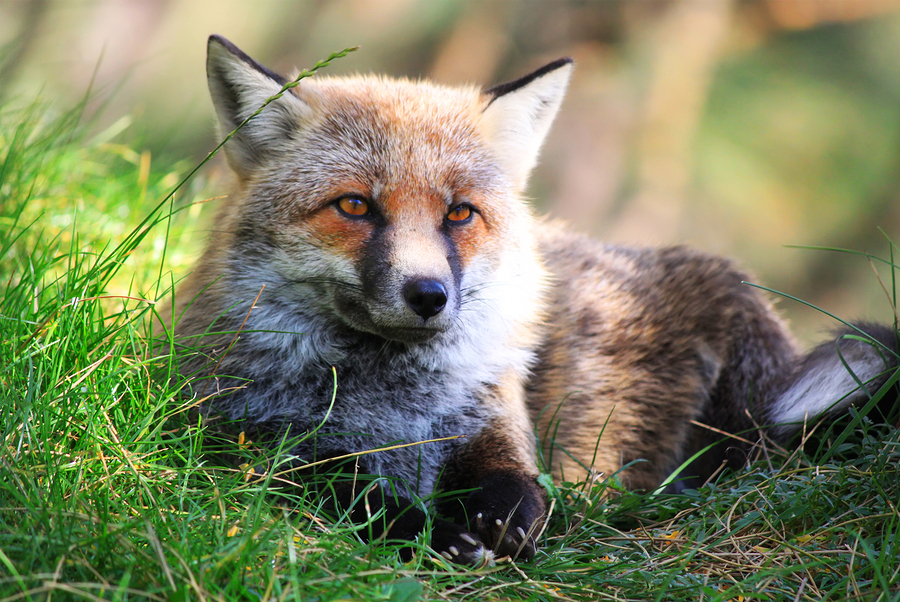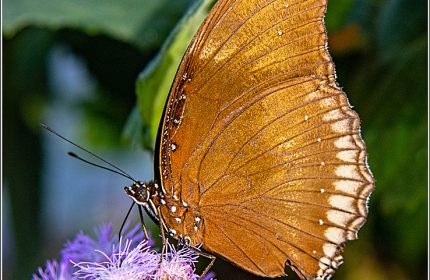Born to Survive
Her footsteps resounded on the concrete path as she made her way to the back door. Overhead, the moon hung in the sky like some large floodlight, illuminating the countryside around. With breath almost frozen to her lips she reached out for the door handle as she fumbled with her key.
“Was that a sound?” she thought as she glanced to her right and looked into the partly shaded face of a sitting fox.
This was the sight that greeted my youngest daughter as she returned home one night from a disco. To say she entered the back door rather quickly would not be far from the truth. In fact, to say she catapulted herself in the door would be a more appropriate statement!
Ever since we had moved into our house I had longed for this to happen to me. I had seen badgers and the odd hedgehog. We had even had a herd of heifers in the yard, but still the fox eluded my gaze.
There is something about the fox that fascinates me. A most cunning animal by nature, the fox can be said to possess great alertness that has enabled it to live close to human activity without being easily noticed. Although the great fox hunting debate goes on, the fox has managed to survive very well.
I remember a good few years ago when I happened to be in a lime quarry in Dorset, that a hunt was going on to my right. With hounds barking wildly and horns blowing madly, it was an awesome sound. However, it was not so for the crafty old fox. He had managed to get through the river and was standing in the lime, knowing full well that if the hounds had not lost their scent in the water, they would not relish the fine lime dust that was every where around. This was to be his saving grace!
The fox is a very playful creature, although it may not be particularly interested in showing us these skills voluntarily. When I was a lad, I was told about “Charming”, the wonderful strategy that the fox may use to catch a rabbit or such rodent. The story was told of a fox rolling about the grass in order to gain the attention of a nearby rabbit. Once the interest was there, the fox would begin to chase its tail. All the time the rabbit, who by now was totally interested and wondering what on earth the fox was doing, was looking spell bound at the scene. Little by little the fox would endeavour to get nearer until at long last, it would grab the poor unfortunate rabbit in its jaws and makes off with it.
I grew up longing to see this sight but alas, up to now I have been robbed of this delight.
The fox has a competitive, albeit, not very sporting way of demonstrating its eviction powers in order to gain living quarters. Once it has spotted suitable accommodation, such as a place inhabited by a badger or a rabbit, it will begin its process. If the intended dwelling is occupied by a badger, the fox will take up residence at the entrance, whilst continually fouling this with a secretion from glands that are under the tail. The badger, cleanly by nature, cannot abide the mess and moves out. In the case of the rabbit, the poor thing is literally eaten out of its home. It makes one feel so grateful at times that we as human beings usually act in a more compassionate and caring way. However, I can think of exceptions.
The fox is not really particular these days about diet, in fact in order to survive, its tastes have become quite varied and whereas rabbits may have been on top of the menu a few years ago, it has also taken a delight in a whole variety of delicacies. Rats, mice, voles, hedgehogs, squirrels, frogs and a host of vegetable matter being amongst these. Ducks, geese and chickens are also on its hit list at times where it can do malicious and questionable damage. Often I have seen the odd fox just ambling across the local nature reserve where I go bird watching, with a coot or moorhen in its jaws. Such are the food choices it makes these days.
Spring is the time when cubs are born and their home is deep down in one of the warm earths that was prepared for this occasion. Along with this birth comes the added pressure on the adults of having sufficient food to feed the small cubs. Four or five cubs are a common number born to the vixen but she only has one litter per season. For the first month, the vixen will probably stay with the cubs, whilst the dog supplies the endless rations of much needed food.
After they are a month old, they can often be seen playing out in the fields, as a group. This exercise continues for a good length of time. The vixen then teaches them hunting tactics in preparation for their independence. By the end of summer, the cubs are able to fend for themselves and by autumn they have left their home and begin their independence.
It is quite feasible that during the time of teaching hunting techniques, that a vixen who has taken to poultry killing, may teach her cubs to do the same, however it must be said that often foxes have been known to visit poultry farms and never do any damage whatsoever.
Foxes have long been accused of vicious slaughter that has also included small lambs. This in return has led to them being sought out and destroyed. However it is now known that only a small number of foxes kill lambs. Evidence has shown that the fox may take a poor quality, weak lamb but often these have probably already died before the fox got to them.
In the media just lately has been the horrible news of a fox attacking children while they lay in their beds. As awful as this sounds it is quite out of character for the fox to do such a thing.
Love them or hate them, the crafty old fox is here to stay. You may encounter one on your early morning walk. It may well be in the middle of the countryside or even on a main road, where it may be in the process of raiding dustbins or refuse bags that have been put out the night before for the dust cart.
You may also stumble upon one in early summer as it exercises its cubs, or perhaps catch one in your car headlights as you go round the bend on your way home. Or perhaps you will witness one as it is run to ground followed by a pack of hungry hounds belonging to the local hunt. Whatever and wherever, please realise the red fox is a survivor. It has been reared for this purpose and is only doing what nature has led it to do in order to carry out these survival tactics.
Written by: Grahame Howard
© 2010 Grahame Howard
GrayH
Latest posts by GrayH (see all)
- Coping with the Changes - February 7, 2014
- Born to Survive - January 23, 2014





















